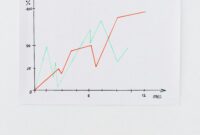Predictive analytics in farming harnesses the power of business intelligence (BI) to transform agricultural practices. By analyzing vast amounts of data, farmers can make informed decisions that improve crop yields, reduce costs, and enhance overall efficiency. This article explores the impact of predictive analytics in farming and how business intelligence plays a crucial role in this transformation.
The Role of Predictive Analytics in Farming
Predictive analytics involves using statistical algorithms and machine learning techniques to identify patterns and forecast future outcomes. In farming, this means leveraging historical data, weather patterns, soil conditions, and other variables to predict crop performance, pest outbreaks, and optimal planting times.
Enhancing Crop Yields
One of the primary benefits of predictive analytics in farming is its ability to enhance crop yields. By analyzing historical crop data, farmers can identify trends and determine the best practices for planting and harvesting. For example, predictive models can suggest the ideal planting time based on soil moisture levels, temperature, and historical yield data. This leads to better crop performance and higher yields.
Reducing Costs
Predictive analytics also helps farmers reduce costs. By predicting pest outbreaks and disease spread, farmers can take preventive measures rather than reactive ones. This not only saves money on pesticides and treatments but also minimizes crop loss. Additionally, predictive analytics can optimize irrigation schedules, ensuring that crops receive the right amount of water at the right time, reducing water waste and lowering utility bills.
The Integration of Business Intelligence in Predictive Analytics
Business intelligence tools are essential for integrating predictive analytics into farming. These tools collect, process, and analyze data from various sources, providing farmers with actionable insights. BI systems can visualize data through dashboards and reports, making it easier for farmers to understand complex data and make informed decisions.
Data Collection and Management
Effective predictive analytics relies on accurate and comprehensive data collection. Business intelligence systems help farmers gather data from various sources, including sensors, weather stations, and satellite imagery. These systems also manage and store data, ensuring that it is easily accessible and up-to-date.
Data Analysis and Visualization
Once data is collected, business intelligence tools analyze and visualize it. This process involves cleaning and processing data to remove any inconsistencies or errors. Advanced analytics techniques, such as machine learning and artificial intelligence, are then applied to identify patterns and make predictions. The results are presented in easy-to-understand formats, such as graphs and charts, enabling farmers to quickly grasp the insights.
Case Studies: Predictive Analytics in Action
Several case studies highlight the successful implementation of predictive analytics in farming. These examples demonstrate how farmers use business intelligence tools to improve their operations and achieve better outcomes.
Case Study 1: Precision Agriculture
In precision agriculture, farmers use predictive analytics to optimize planting, fertilization, and irrigation. By analyzing soil data, weather forecasts, and crop health, they can determine the precise amount of fertilizer and water needed for each crop. This approach minimizes waste and maximizes yield, leading to increased profitability.
Case Study 2: Pest Management
Predictive analytics is also used in pest management. Farmers can predict pest outbreaks by analyzing historical pest data, weather conditions, and crop growth stages. This allows them to take preventive measures, such as deploying biological control agents or adjusting planting schedules, to minimize pest damage and reduce the need for chemical pesticides.
Conclusion
Predictive analytics in farming, powered by business intelligence, is revolutionizing agriculture. By leveraging data and advanced analytics techniques, farmers can make informed decisions that improve crop yields, reduce costs, and enhance overall efficiency. The integration of BI tools is essential for collecting, analyzing, and visualizing data, providing farmers with actionable insights. As the adoption of predictive analytics in farming continues to grow, the agricultural industry will experience significant advancements, leading to more sustainable and profitable practices.
FAQ
Q: What is predictive analytics in farming?
A: Predictive analytics in farming involves using statistical algorithms and machine learning techniques to analyze data and forecast future outcomes, such as crop performance and pest outbreaks.
Q: How does predictive analytics enhance crop yields?
A: Predictive analytics enhances crop yields by analyzing historical data to identify trends and determine the best practices for planting and harvesting, leading to better crop performance.
Q: How can predictive analytics reduce farming costs?
A: Predictive analytics reduces farming costs by predicting pest outbreaks and disease spread, allowing farmers to take preventive measures, and by optimizing irrigation schedules to reduce water waste.
Q: What role do business intelligence tools play in predictive analytics for farming?
A: Business intelligence tools collect, process, and analyze data from various sources, providing farmers with actionable insights through data visualization, helping them make informed decisions.
Q: Can you provide an example of predictive analytics in action in farming?
A: In precision agriculture, farmers use predictive analytics to optimize planting, fertilization, and irrigation by analyzing soil data, weather forecasts, and crop health, leading to increased profitability.
Q: What are the benefits of integrating predictive analytics into farming?
A: Integrating predictive analytics into farming improves crop yields, reduces costs, enhances efficiency, and promotes more sustainable and profitable agricultural practices.



